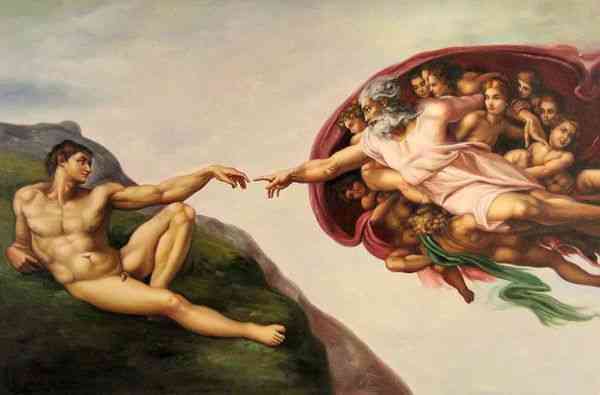We had previously talked about the genius Leonardo Da Vinci and Raphael and we described them with Michelangelo as the artistic triad of the Renaissance and in this article we will continue in this series and talk about the great artist Michelangelo who carved the best sculptures and drew the most beautiful paintings spread in Italy.
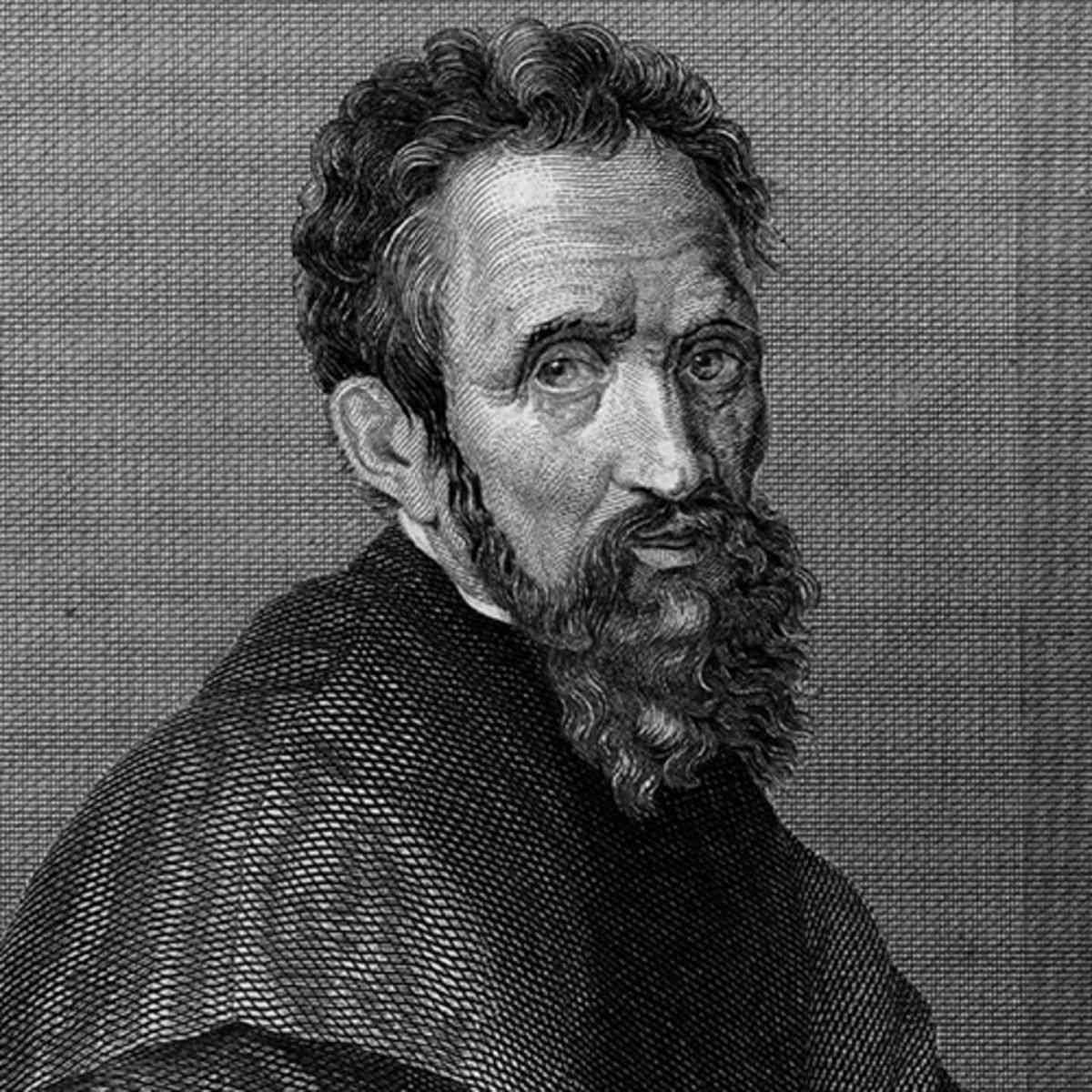
Michelangelo is considered one of the greatest artists and sculptors in the Renaissance. He was a sculptor, painter, poet and architect with influence on Western arts, where some described him as the original model of the artist. Michelangelo was distinguished as being religious and this religiosity appears in his work that we will talk about in this article.
Artistic start
Michelangelo was born on March 6, 1475 from a father who was working as a judge in his government in Florence and lived in Florence was beginning to influence sculpting when his mother fell ill difficult as a child, which was forced to put him with his family to cut stones and the owner of the house was working in stone cutting where he was saying Michael Anglo, the main reason for learning sculpture is to live with this family. [1]
Leon Alberti says: "A man can do everything if he wants to."
Michelangelo was found in the best place to support artistic talent, which is Florence, where it was a vibrant art center and the place for all artists.
To find out more about Florence and its impact on the Renaissance, I suggest you read this article
Michelangelo’s father was not in agreement with deciding that art is like his profession for Michelangelo and his actual training appeared when he was 13 years old. He was trained in drawing by the painter Domenico Gerlandio, where he became famous for his murals. After a year of training, Michelangelo drew attention due to his talent, particularly attracting the first patron In Florence Lorenzo dei Medici, where Lorenzo extended an invitation to Michelangelo to stay in a room in his home, Michelangelo learned from the family's intellectual circle Medici, where he improved his style and learned under the tutelage of Protoldo de Giovanni. [1]
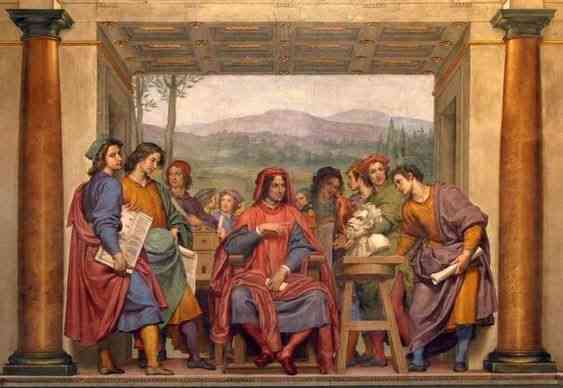
For more information on the first art sponsor, Lorenzo Medici, read the second part of the series
His artwork
Michelangelo owned the artworks that are considered one of the most famous works in the world at the present time and varied between drawing and sculpture. Among the most famous of these works was the painting "Creating Adam" and the statue of "David"
- Paintings
Sistine Chapel ceiling
It is a wall painting that was painted on the ceiling of the Sistine Chapel where the church was built at the request of Pope Sixtus IV and was painted on its ceiling by Michelangelo and began to be painted in 1508 and finished drawing 1512 where it took four years to complete.
At first, the ceiling of the church was painted in blue and covered with golden stars, then Pope Julius II asked Michelangelo to paint on the ceiling and gained a wide reputation after drawing the plate.
“He was not very respectful of his brushing work. According to Vasari, the reason Julius performed this noble task for Michelangelo was because of the incitement of his technical competitors, the painter Raphael and the architect Bramante. Vasari says the two were hoping to bring down Michelangelo, because he was less accustomed to Drawing from sculpture, or alternatively, he would get so aggravated with Julius that he would want to leave completely from Rome”.
The painting contained several stories, the most prominent of which were related to creation, such as the creation of Adam, the creation of the sun, the plant, the stories of sin, the expulsion from Paradise and many other stories.[2]
The Torment of Saint Anthony
It is his first painting and drawing, and he is at the age of 14, and it is one of the four surviving paintings of Michelangelo. The painting shows the story of the legend of St. Anthony, who was attacked by demons while flying with the angels
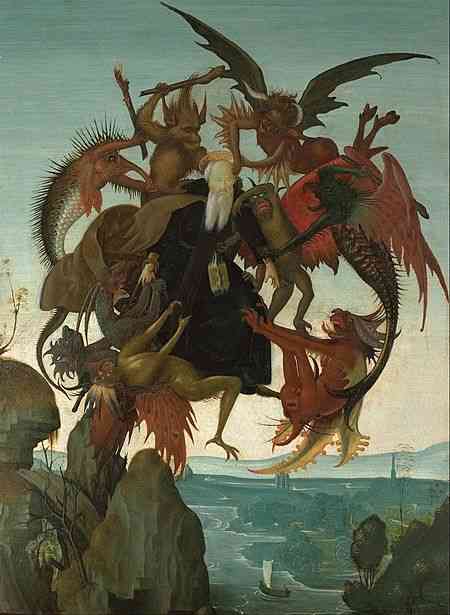
The Last Judgment (Michelangelo)
A painting was drawn in the Sistine Chapel 25 years after its roof was completed and it took four years to work and was drawn upon the request of Pope Clement VII and the story of the painting is on the day of the last reckoning with God and the last judgment where people appear naked and the presence of angels.
The board consists of more than 300 characters in various dynamic situations and that all people display physical strength and angels appear as some of them carry papers representing human actions and on this basis, a person enters paradise or hell
It is worth noting that Michelangelo drew himself a self-portrait in the painting and is considered the first self-portrait of him. Michelangelo was later called "Michelangelo Divine" because of their belief that he can name the human body as God created him
This painting has many meanings and symbols and is one of the best paintings of Michelangelo.[3]
He has a lot of paintings, but most of them disappeared or were burned, and we will show you some of his paintings in pictures
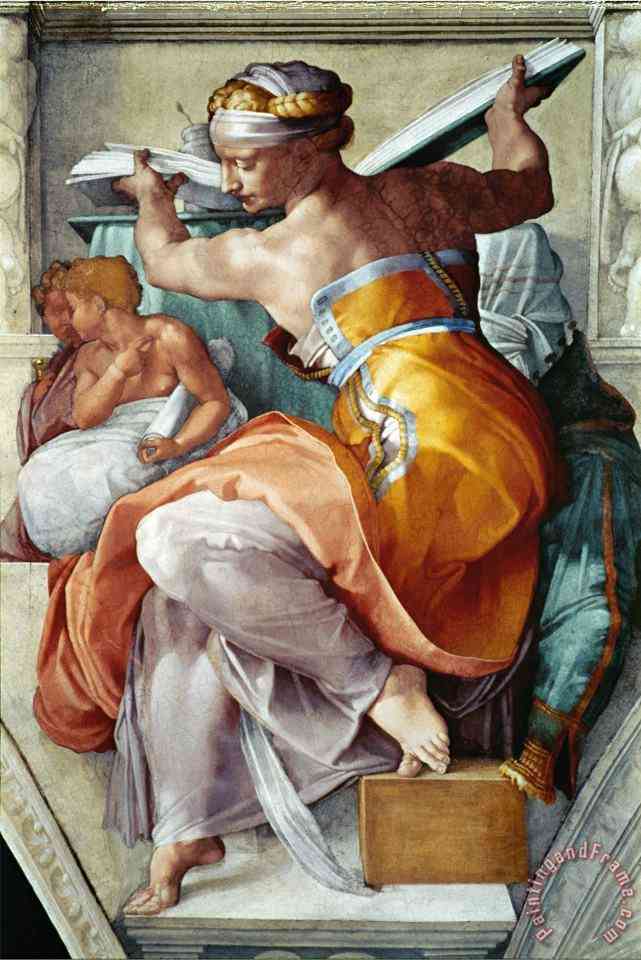
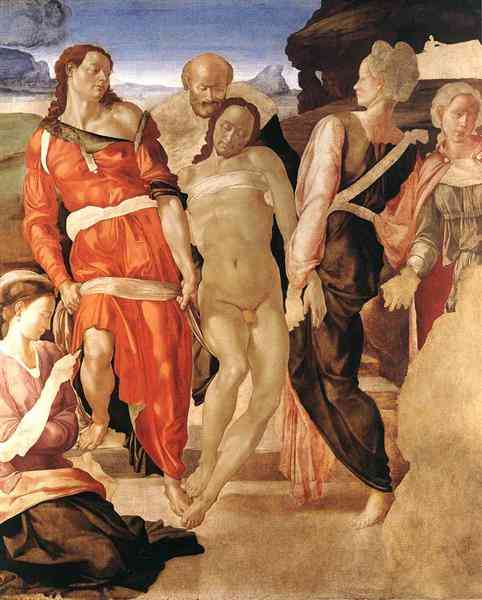

Sculptures
Michelangelo received his great reputation due to the sculptures. He has sculptures that are very impressive and ideal for a very large degree.
Among these sculptures are the most famous sculptures "David", "Moses" and "Beta" and we will talk about them in this article
David
It is one of the most famous sculptures of Michelangelo and is the embodiment of David the King, where the height of the statue is 6 meters
He gave him this size because of David's personal bone and his strength, in addition to giving all his statues the appearance of God and not just the statue of David because he believes that man is the embodiment of the form of God.
"When everything is finished, it cannot be denied that this work has taken the palm of all the other statues, modern or ancient, Greek or Latin; there is no other artwork equal in any way, with such a fair proportion, beauty, and distinction." Which was finished by Michael Magnolu.
The importance of this statue is as accurate as its making, as it was so delicate in it that it even showed the veins in the hands and its magnificence sculpting the face and body.
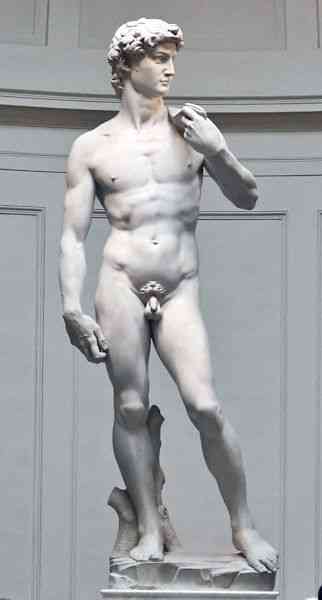
The statue was made in total secrecy for a period of two years, then the people saw it and after its completion a great discussion took place between a committee consisting of 30 people, among whom were Leonardo da Vinci, Sandro Botticelli and Juliano da Sangallo. The political Florence in Piazzale della Signoria.
David was photographed after his victory over Goliath, and Michelangelo was able to show David's details that he stands tense and is also at the top of the focus and stands relaxed, but attentive, and that the classic position in which David stands is called contrapposto. By Verrocchio, Ghiberti, and Donatello, but these versions feature David standing on Goliath's severed head and are smaller.[4]
Mousa
The statue embodies the Prophet Moses, where he is eight feet high, has large muscular arms and angry feelings appearing in his eyes. Moses carries the plates engraved with the ten commandments he received from God and also holds in his hand his long beard, sits on a marble chair, and Michelangelo shows very accurate details as usual.
Michelangelo once wrote: "A real and pure sculptural work, by definition, a piece work, not molded or styled in style, must retain much of the original shape of the stone block and should avoid projections and separate parts that are rolling down from its weight.
When we look at the statue, we see a great energy of thought and culture and how Michelangelo made the statue with such great accuracy that we make us see in the statue of Moses the full story of the anger of Moses from the children of Israel after seeing them worshiping the calf. Think for a moment that he is alive.
Michelangelo was able to create an intense and energetic character despite Moses' sitting. While the marble itself remains, it looks as though his beard is moving and flowing and his muscular arms and torso are about to shift.[5]
Pietà (Michelangelo)
She is one of the first sculptural works that was the cause of his fame after six decades before his death and like the rest of his sculptures, it is very accurate and distinctive details where the Virgin Mary embodies the Christ after she was crucified and in her eyes the feelings of great sadness and surrender as she looks at her dead son after they brought her to her.
The statue was commissioned to Cardinal Jean de Belher, the statue was made of marble and placed on the northern side of the entrance to the cathedral in Rome, which is the only piece signed by Michelangelo.
This unprecedented work in history represents the classical beauty of the Renaissance where Mary was carved as a young woman and her beauty appeared and endured her dead son and his wounds on his hands and body and the traces of murder appear and that the face of Christ is full of passion passion when Michelangelo set out to create Pietà, he wanted to create a work he described As "the image of the heart."[6]
- His architectural achievements
Despite Michelangelo's interest in sculpture, he also had a talent for architectural design and did many designs.
The dome of St. Peter's Basilica in Rome
Pope Julius II asked Michelangelo to complete the construction of the dome after the death of Bramante and adjusted its design. Michelangelo was influenced by the dome of Florence Cathedral designed by Filippo Brunelleschi and he designed his dome the church of St. Peter's similar to that of Florence cathedral in Gothic style
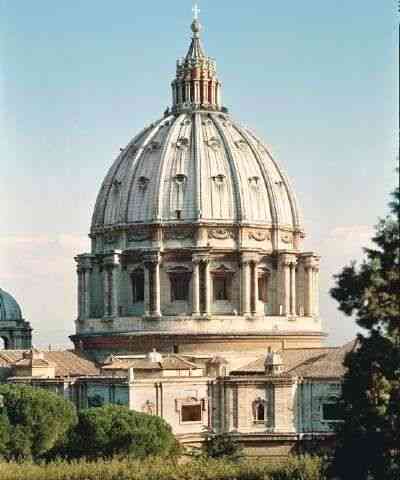
The library accompanying Lorenzo Cathedral in Florence
It was a demonstration of Michelangelo's architectural talent as he built his architectural system and merged the pattern of adjacent columns with arcs, niches and triangles and when we look at the columns we find them and they were carved into the wall to become like a part of them and here we see the effect of sculpture on the architectural mentality and adding solutions to everything and when we look at The stairs are like a waterfall that flows down to the bottom, which makes the visitor have a visual attraction to enter the inside and climb the stairs.
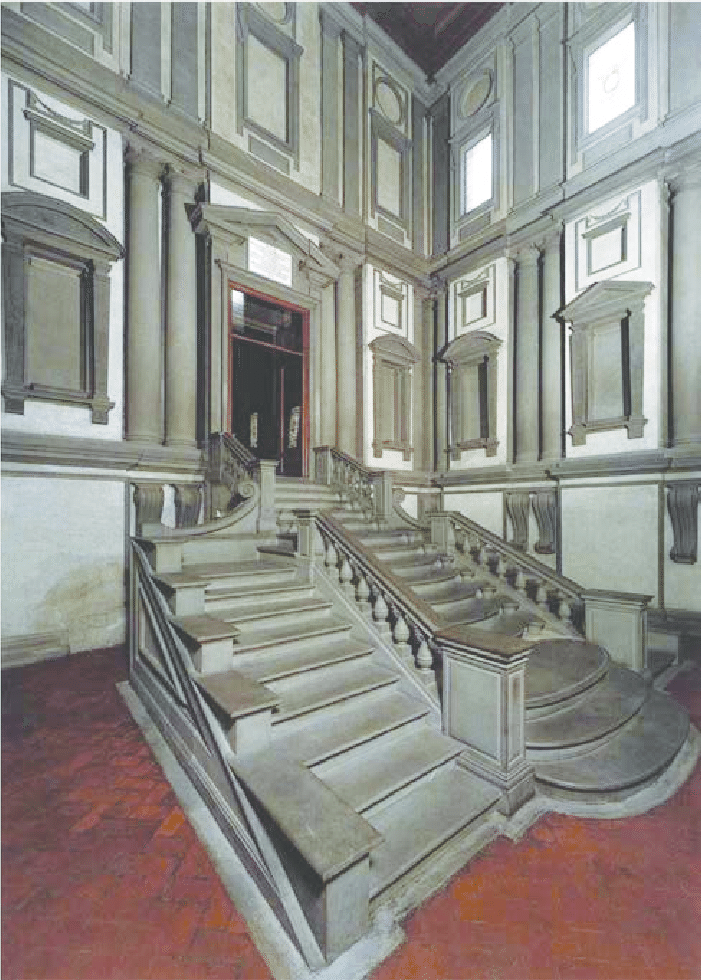
Campidoli Parliament
Michelangelo designed the square, where he placed in the middle of the square at the convergence of the lines a statue of Emperor Marcus, who appeared on his horse, and he created opposite and identical buildings.
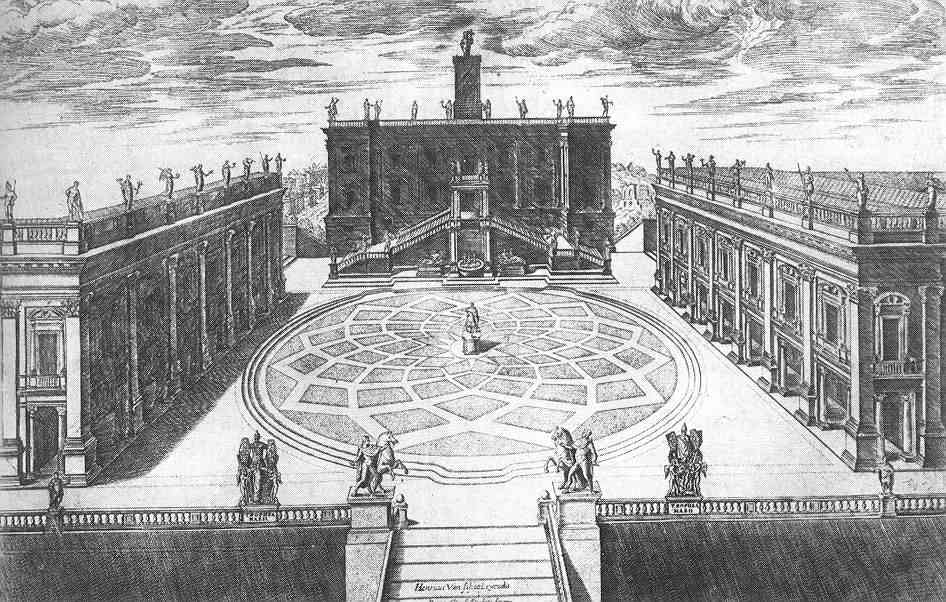
The design signifies the meeting of Parliament’s decisions (Legislative Councils) with the Governing Center (Executive Councils) in the center and the receipt of these decisions by Emperor Marcus while he is on the horse indicating strength and determination to improve the conditions of the country where the intersecting lines represent the decisions and their intersection represents a sharp debate between members to develop the appropriate law... For everyone, and meet them in the middle and implemented by the ruler.
[1] HISTORY.COM EDITORS, (OCT 18, 2010) ,"Michelangelo",Retrieved: (21/7/2020)https://www.history.com/topics/renaissance/michelangelo
[2] italian renaissance , "Michelangelo’s Painting of the Sistine Chapel Ceiling" Retrieved: (21/7/2020) http://www.italianrenaissance.org/a-closer-look-michelangelos-painting-of-the-sistine-chapel-ceiling/
[3] khanacademy," Last Judgment - Essay by Dr. Esperanca Camara" Retrieved: (21/7/2020) https://www.khanacademy.org/humanities/renaissance-reformation/high-ren-florence-rome/michelangelo/a/michelangelo-last-judgment
[4] Accademia, "Michelangelo david ,Retrieved: (21/7/2020) http://www.accademia.org/explore-museum/artworks/michelangelos-david/
[5] Rome.info, "Michelangelo's Moses"Retrieved: (21/7/2020) https://www.rome.info/michelangelo/moses/
[6] italian renaissance, "Michelangelo’s Pieta" Retrieved: (21/7/2020) http://www.italianrenaissance.org/michelangelos-pieta/

